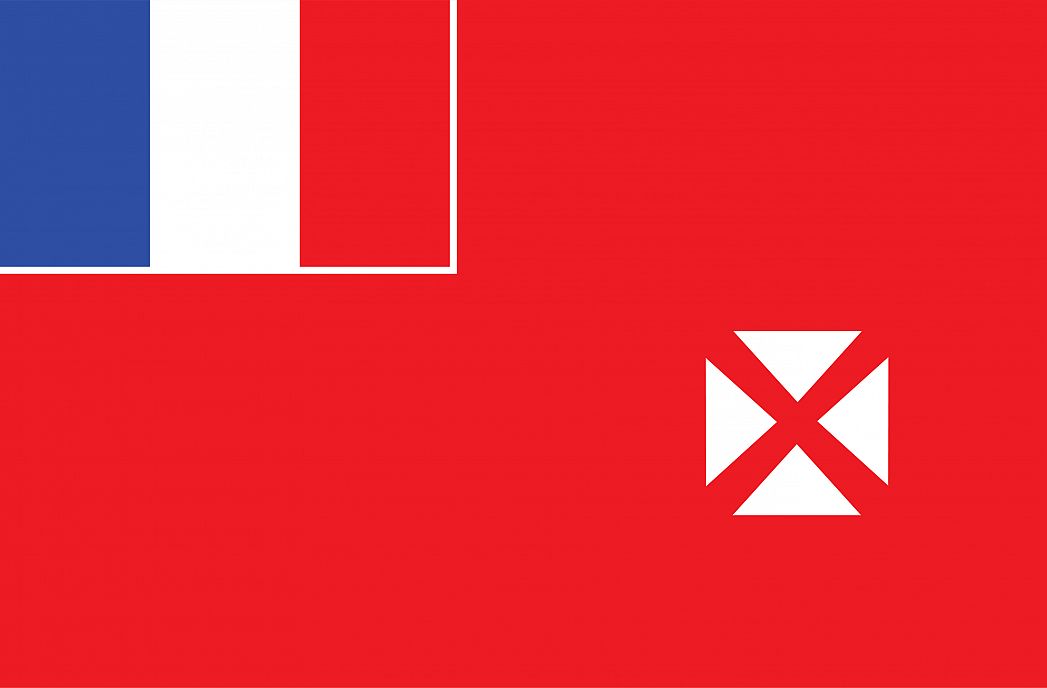The flag of France and the official flag of the territory of Wallis and Futuna Islands is quite simple and is composed of three huge vertical blocks of blue, white, and red. The unofficial flag, named the Uvéa Flag, is also simple. The flag is made up of a white square below a red saltire. This shape is then placed on top of a completely red background but off the centre. On the upper left corner, on the hosting side, the flag of France is outlined.
Every color of the unofficial flag of Wallis and Futuna symbolizes something different. The white and red saltire forms four triangles that are isosceles in nature. The red color used is a symbol of the courage of the people in the region while the white color is a symbol of purity and peace. Three triangles are symbols of the three kings that the islands customarily have. The fourth triangle is a symbol of the administrative representative from France. The Tricolore on the top left corner was placed there to remind the people of French sovereignty.
The unofficial flag of Wallis and Futuna was adopted by the region in the year 1985. The first flag of the region was designed in the year 1840 by the Marist Father Battalion. After that, another flag was designed in 1842. This flag had a white background with Greek crosses in each other four corners. All crosses alternate between blue and red with the top left corner one on the hoist side being blue.
Historically, the flag has maintained the blue and red colors. After the adoption of the 1842 flag, the current design began to emerge. All variations of the flag are more or less similar to the current one with slight differences between 1837 and 1887. Between these years, the Tricolore was not on the top left corner of the hoisting side but the other shapes and colors were present. Also, since the region has three kingdoms, each one has a flag. The kingdom of Alo, Sigave, and Uvea all have flags of their own.
This page was last modified on May 1st, 2018
More on Graphicmaps

Published on 2019-11-06
What is a Trade Embargo?

Published on 2019-11-04
Which Two Countries Used to Have the Same Flag?

Published on 2019-09-16
What Is the Only Two-Sided State Flag?

Published on 2019-09-16
Which Country Flag Looks Like the Texas Flag?

Published on 2019-08-29
Flags That Resemble the US Flag

Published on 2019-08-20
